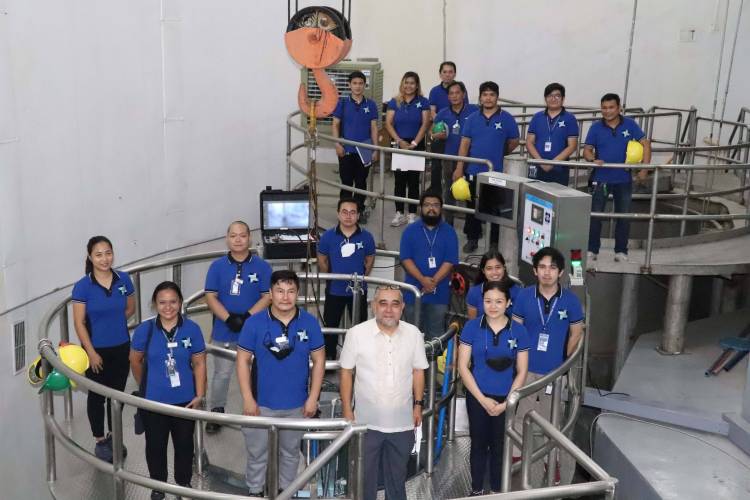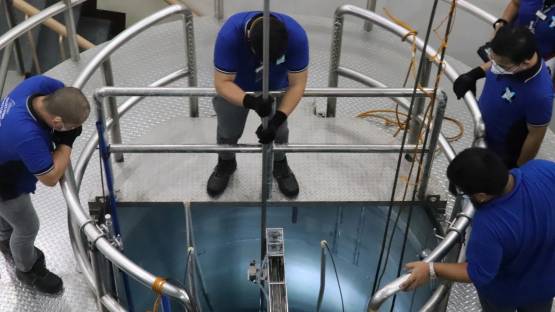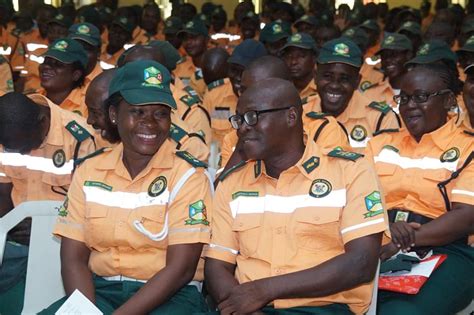After more than three decades, the Philippines is again operating a nuclear facility. In 2014, a proposal was accepted to utilize fuel elements of a shutdown research reactor for training and education, which the IAEA has been supporting through a series of technical cooperation projects. In the first project that launched in 2016, the IAEA assisted the Philippine Nuclear Research Institute (PNRI) to build capacity in reactor design, neutron dosimetry and regulatory matters related to research reactors.
A second cooperation project followed in 2020 and is ongoing to further build capacity, particularly in reactor engineering and operation, reactor utilization and development of a reactor training programme to sustain local capacity-building activities. “With nuclear power in consideration for the country’s future energy mix and a demand for nuclear technology in different sectors, it is essential to build capacity and develop a new generation of scientists and workforce in this field,” said Syahril Syahril, IAEA Programme Management Officer for the Philippines.
A presidential executive order from earlier this year outlines the government’s position for the inclusion of nuclear energy in the Philippines’ energy mix. The Philippines built a nuclear power plant in the late 1970s, but the project was stopped in 1986, and fuel was not loaded into it.
Revitalizing nuclear capacity

In June, PNRI loaded 44 nuclear fuel rods into the core of the newly constructed tank of the Subcritical Assembly for Training, Education and Research (SATER). The fuel rods had been previously stored unused for more than 30 years. The new SATER facility is housed at the Philippine Research Reactor 1 (PRR-1) building and will remain in a subcritical state, which means the nuclear fission chain reaction is dependent on neutrons from an external source. PRR-1 SATER is designed not to reach a critical state, which is when the chain reaction is self-sustaining, under any operational or incidental condition, providing a safe and versatile tool for researchers and students.
The 1 Megawatt PRR-1 research reactor had reached criticality in 1963, but it was in extended shut down since 1988. “The activation of PRR-1 SATER is a milestone for the Philippines, as the facility will provide significant support in re-establishing nuclear capabilities in the country,” said Alvie Asuncion-Astronomo, Associate Scientist and former Head of PNRI’s Nuclear Reactor Operations Section. In the past two years, IAEA assisted the local regulatory and operating staff by providing recommendations on licensing and commissioning PRR-1 SATER. IAEA and international experts participated in various on-site missions.
Subcritical assemblies, such as PRR-1 SATER, are valuable educational and research tools. It will support recently launched nuclear education programmes at the University of the Philippines Diliman and Mapua University. In the field of research, PRR-1 SATER will be used for reactor physics experiments, as well as a demonstration facility for neutron irradiation and neutron activation analysis.
“PRR-1 SATER is expected to be a training reactor for research reactor operators, regulators and users. It also aims to increase the research reactor stakeholder base in the country,” Asuncion-Astronomo said. “The facility is projected to open the whole scientific field of reactor physics and engineering for Filipinos and to pave the way for the Philippines to strengthen its niche in the nuclear field.”
PRR-1 SATER is expected to conclude commissioning tests and become fully operational by 2023.







